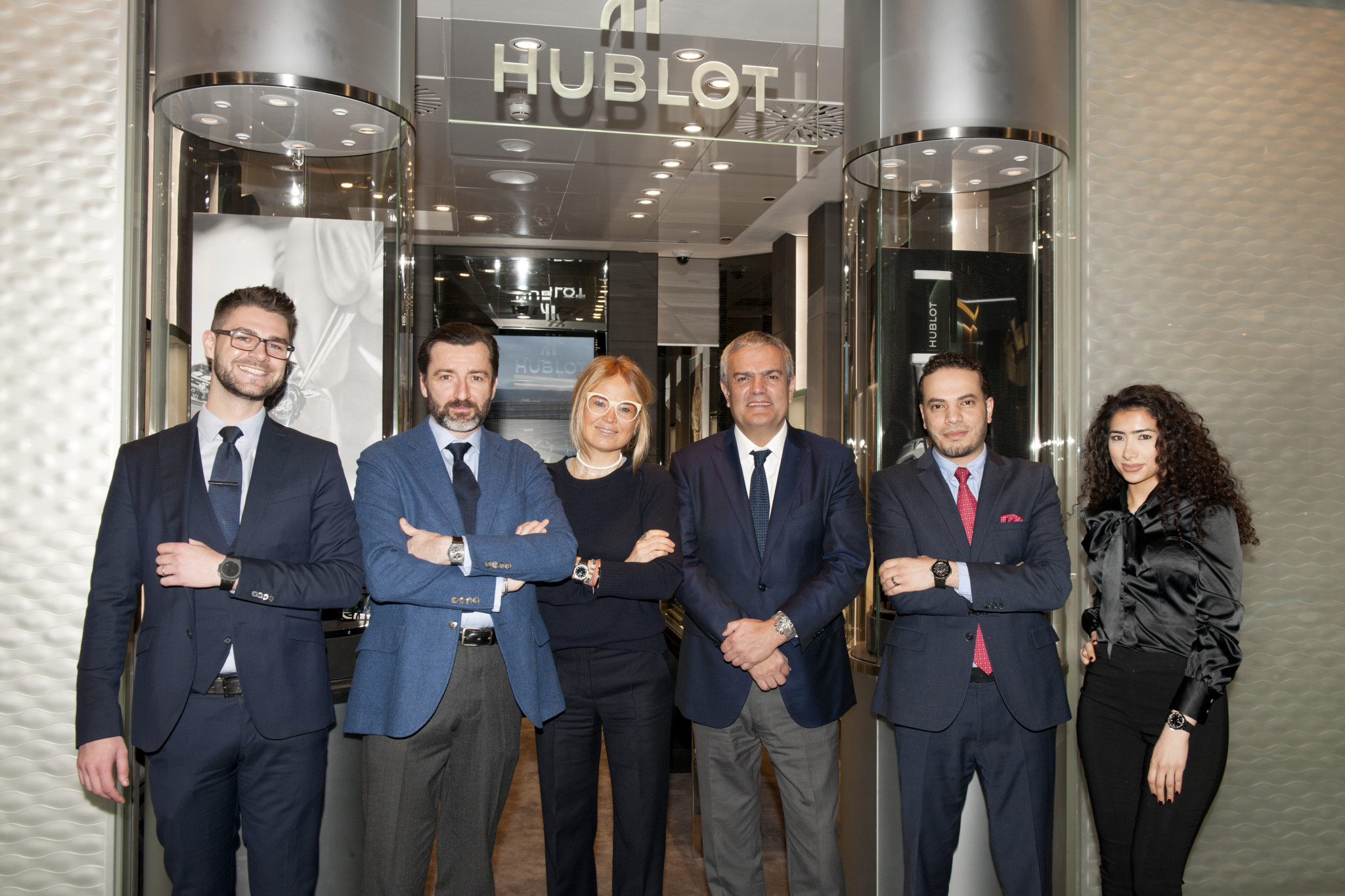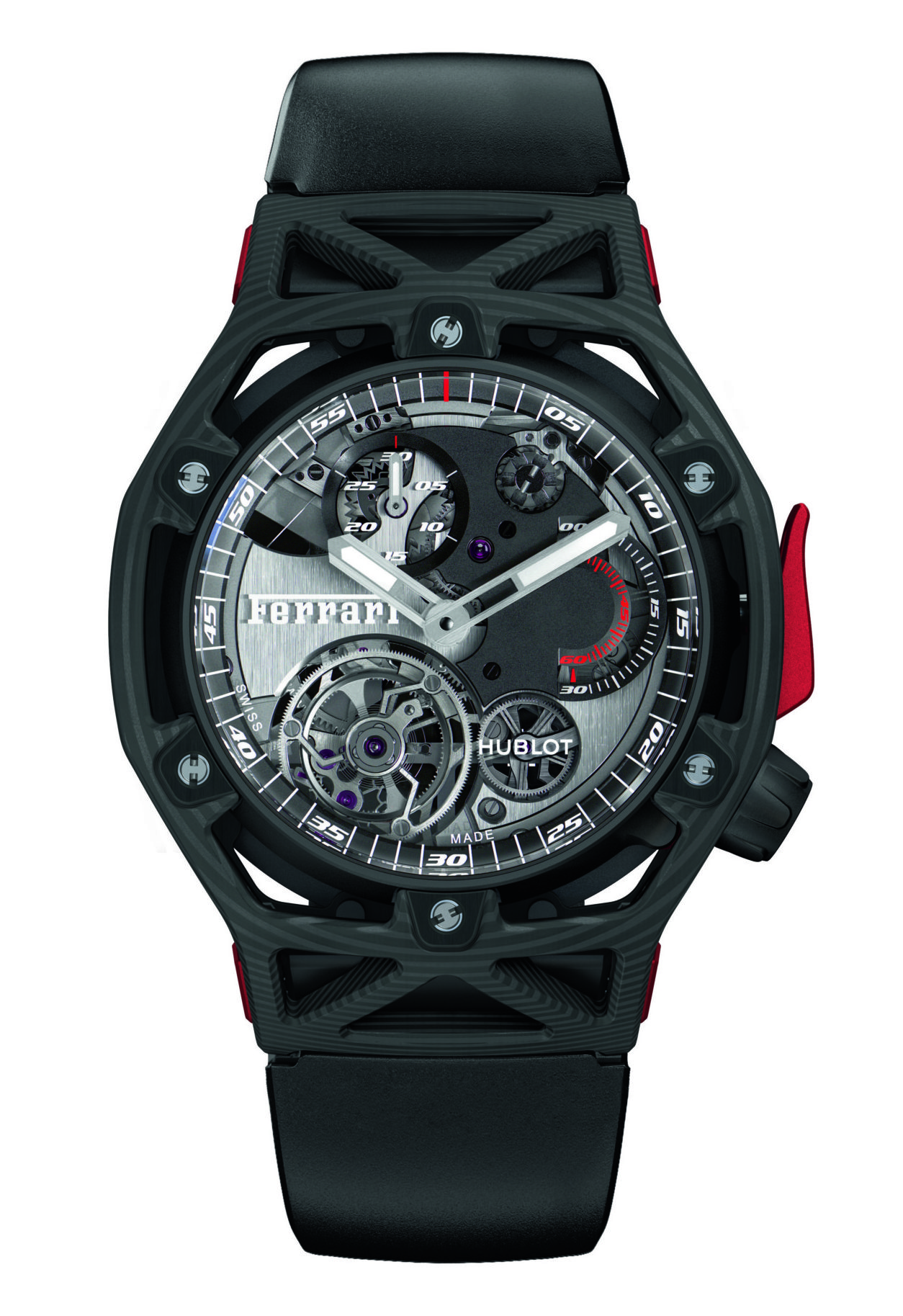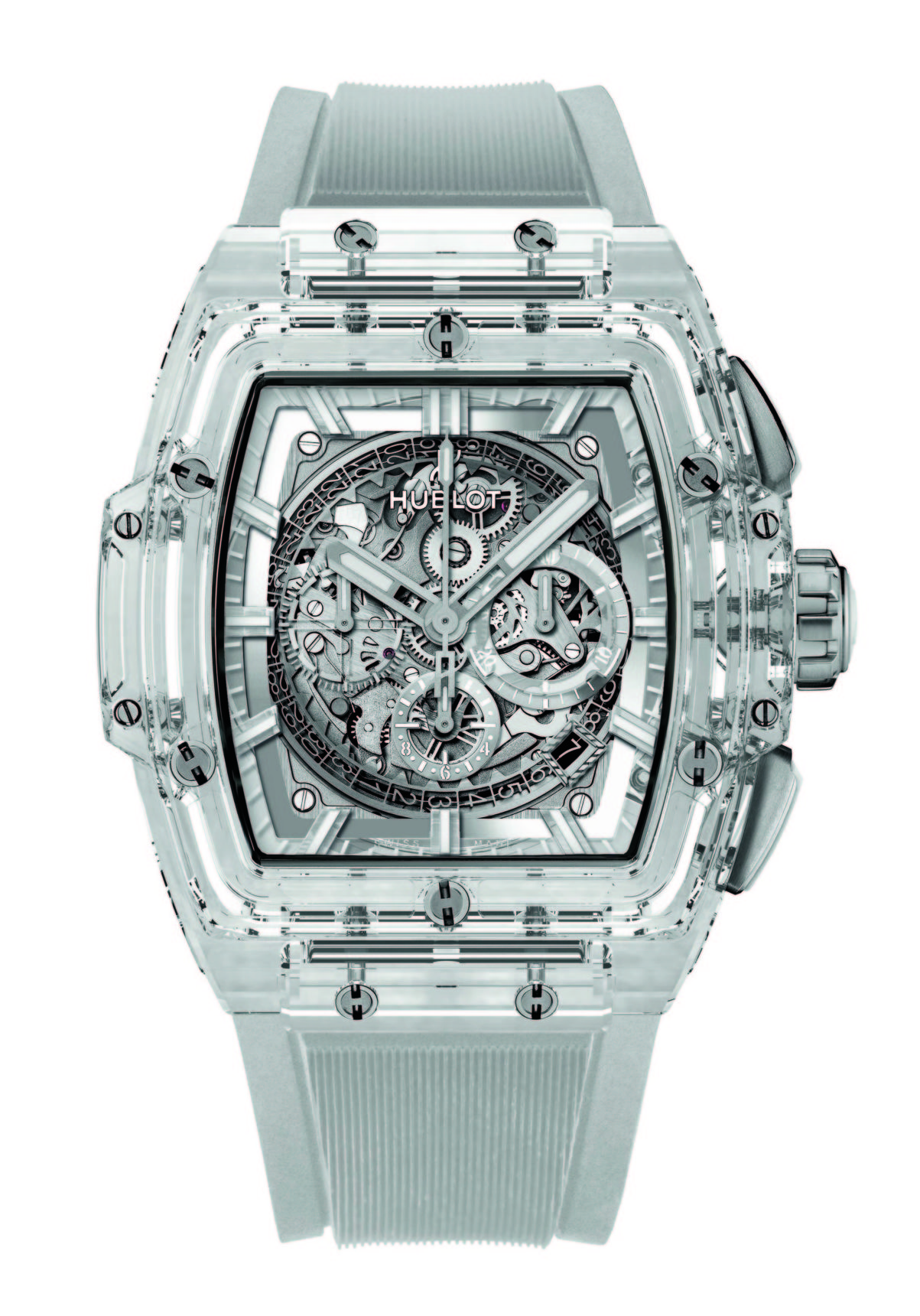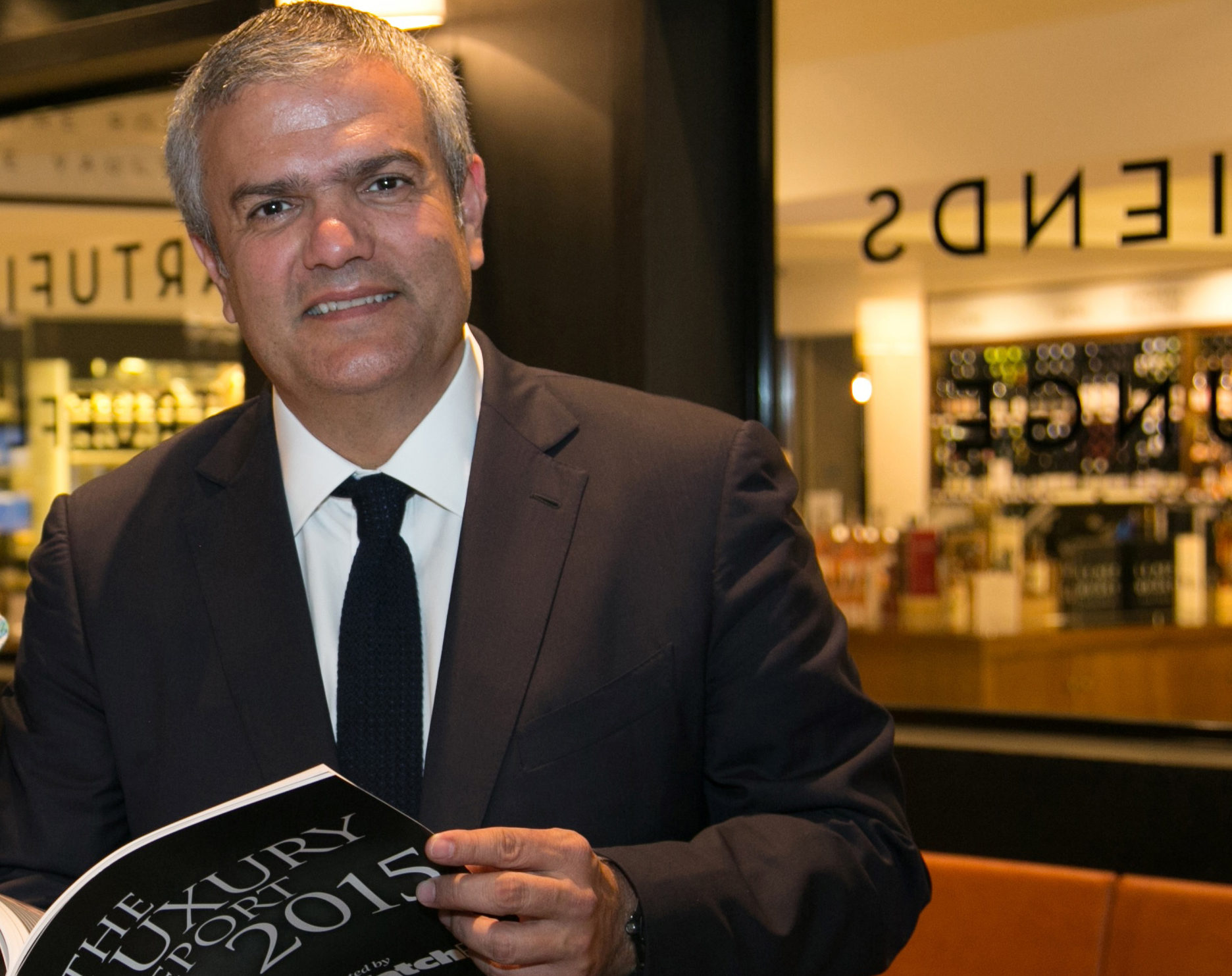The art of fusion is a classic watchmaker’s marketing tag, meaning everything and almost nothing. However, in the hands of Hublot CEO Ricardo Guadalupe, it has established itself as a mission statement covering partnerships like the five-year-old deal with Ferrari and charitable ventures including a current push to provide clean water to impoverished communities. Above all, it describes an approach to watches that fuse the finest movements with startling design and innovative materials. WatchPro spoke to Mr Guadalupe at Baselworld to find out how all of this translates into profits for Hublot’s UK retail partners.
It is the 70th anniversary of Ferrari, and Sebastian Vettel has just won the opening Grand Prix of the Formula One season in the red arrow of the Italian car making giant on the day we meet.
No wonder Ricardo Guadalupe, CEO of Hublot, is happy. His brand has been tightly associated with Ferrari for the past five years, but 2017 will see the partnership hit a new level.
Most partnerships between watch brands, car makers and their racing teams, boil down to branding. There will usually be an accompanying announcement about the synergies between businesses; the collaboration of design and technical teams; and a shared vision to make the world safer, sexier and more fragrant. You can ignore almost all of this. The partnerships are about branding. The more a watch brand’s logo is seen on the side of a winning car, the happier the partnership will be.
Hublot and Ferrari’s partnership is genuinely different. The LVMH watch brand has been making watches inspired by Ferrari technology and design from the beginning of the association in 2012. In 2017, the two high performance companies are going even further with the launch of a watch designed by the Italian carmaker.
The creation of the Hublot Techframe Ferrari 70 years Tourbillon Chronograph is a new chapter in the partnership. The watch is designed by Ferrari and crafted by Hublot.
The limited edition watch, according to Hublot, is deeply rooted in Ferrari’s DNA, combining strength, performance and agility, while being produced and perfected by the Hublot manufacture. “A perfect fusion of the automotive and watchmaking worlds,” Hublot says.
The collaboration on the design and manufacture of the Techframe certainly demonstrates a depth to the Hublot/Ferrari partnership that exceeds most other associations in the watch and motoring world. However, high profile branding is still the name of the game, as Ricardo Guadalupe, Hublot’s CEO, suggested in conversation with WatchPro.
Meeting on the same day that Sebastian Vettel won the Melbourne Grand Prix in a Ferrari, puts Mr Guadalupe in an especially good mood. “It is perfect because we announced the start of our year to celebrate the 70th anniversary of Ferrari this year and our partnership with them. We had our big party here on Thursday to celebrate and Mr Sergio Marchionne, [CEO of Fiat Chrysler Automobiles, Ferrari’s parent company], was here. Watching the Formula 1 in Melbourne, it looks like the car is good. For us, that is fantastic, because the visibility of the brand increases when you are number one instead of number six. The difference is amazing in terms of visibility on TV,” he says.
High end watch retailers know that selling five-figure watches like Hublots is as much about telling a story and evoking an emotion as it is about talking about the precision of a tourbillon. The Ferrari partnership matters in framing the story, but events like winning a Formula 1 race are not expected to feed through directly into a sales spike.
“I would not say that retailers feel it immediately. It is more about long term brand awareness and brand building,” explains Mr Guadalupe.
Working with Ferrari during its 70th anniversary may be different because it is something that will build through the year, and will be celebrated at several high profile events around the world. “This is really going to be the year of Ferrari for Hublot because of its anniversary,” says Mr Guadalupe. “Ferrari chose Hublot because we are very active at events and activations. The kick-off was here in Basel, but we will have other events in the most important countries for Hublot and Ferrari,” he adds.
The Ferrari-designed Hublot Techframe is a limited edition of 70 units. British retailers will be clamouring to get their hands on them, but Hublot boutiques will get first dibs, and any allocation to partner shops will come second. “Of course, we always give priority to our boutiques. But we do have to look at two things: one is to sell to our retail partners, the other is how we ultimately sell to the end consumer. Some people have paid deposits for this watch before they had even seen the watch. We already have two deposits from customers at our boutique in Hong Kong, so they will get the priority. After that, we work by allocation, depending on the weight of each country. We will look at that after Basel and then confirm the orders,” Mr Guadalupe explains. Calculating the weight of each country is far from simple. The UK was the fastest growing major market in the world for luxury Swiss watchmakers in 2016, and that does move it up the pecking order.

Mr Guadalupe will not be drawn on describing the performance of Hublot in the UK last year, although he does have specific pricing information at his fingertips, suggesting that the impact of Brexit on sterling was a major event. “We increased our prices in the UK, so the difference is now about 5-8% [against euro and dollar markets]. But I know that some brands have still not increased prices. Swatch Group and even Rolex have not adjusted prices and the UK is still about 15% less expensive. At the end of the day, that will increase demand for watches,” he notes.
Hublot keeps a keen eye on the impact of currency fluctuations on price differentials in different markets, and always makes adjustments if the gap becomes too big. “For me, I always want to see a price difference of around 5% or less. When the difference goes over 10%, then we adjust prices. Right now, we are about 7% so we will not increase prices. We really want to support our partners like Harrods, like Selfridges, the very touristic markets,” Mr Guadalupe promises.
Allowing a 7% price advantage for the UK this year will ensure Hublot is competitive on price against rival brands such as Patek Philippe, Rolex, Audemars Piguet and Girrard Perregaux. That will build momentum towards the biggest project of the year, which is the opening of a new Hublot boutique in London. Until now, Hublot has been on New Bond Street – the stretch at the Oxford Street end of the road, which is beginning to be populated with less prestigious brands. That will change in December, when a completely new Hublot Boutique will open at the Old Bond Street end. “We are going to be a neighbour of Patek Philippe and Graff,” Mr Guadalupe says with obvious satisfaction.
“They are redoing the building inside, so it is going to be ready, I hope, on December 1,” he reveals.
The move from New Bond Street to Old Bond Street is, in one sense, peculiar. Hublot prides itself on attracting younger customers with new money, not the inherited wealth that keeps most of Mayfair afloat. But London is a global city, and the performance of Hublot’s boutique will be measured against other boutiques in other global cities.
“London is really a market in itself. We sell mainly to tourists in London, particularly in Harrods and Selfridges. I don’t know the exact percentage, but it could be 80-90% of watches sold in London are sold to tourists,” Mr Guadalupe reveals.
“When you go to the regions, like Manchester, Birmingham, Edinburgh and Glasgow, the market is more locals so the approach is different. The UK is like France. London is the key market just like Paris is the key market in France. Outside the capitals, it is more difficult.”
Hublot’s entire history could be charted alongside the rise of massive emerging markets. The brand was founded in 1980 and the grew over the following 20-30 years in step with the Middle East, China, Russia, India and Brazil. “Yes, emerging markets are always good markets for us,” Mr Guadalupe agrees when WatchPro makes the observation. “China may be an exception, but even there we are starting to get some success selling to the young generation of Chinese. I am really excited about that because there is so much potential for growth,” he adds.
“The best-performing boutique in the entire world is in Dubai Mall. Number two is Las Vegas, number three is Tokyo. Dubai Mall is very strong with the tourist market. That boutique is impressive, it is a machine. I am so impressed. They sell two to three watches per day at our level, which is like $10,000 to $30,000,” Mr Guadalupe says.
For those that have not visited Dubai Mall, it is promoted as the biggest mall in the world. Far from surviving on the spending power of oil-rich Emirati nationals, it draws in customers from across the Middle East, Europe and Asia. The wealthiest Arabs are a key demographic for Hublot, but the brands knows they travel and Mr Guadalupe intends to sell to them all over the world. “Some people can buy several watches in a year, so they might buy in different places: in Geneva, in London and in their own countries,” he describes.
The typical Hublot customer is not getting younger. He or she has always been younger than the customer base of most rival brands. “That has been the case since the beginning. I think our customers are between 25 and 45-years-old. Only 10-12% of our customer are aged over 50. We are shaping the consumers of tomorrow. We have guys who are 15-years-old who are aspiring to own a Hublot one day. They are already fans of the brand, and we hope they buy their first Hublot in five-to-ten years,” he states.
THE ART OF FUSION IN HUBLOT WATCHES
Art of fusion is a flexible term for Hublot, and is applied to collaborations like the partnership with Ferrari; the fusion of technology and materials, such as the use of sapphire as a case material for innovative timepieces; and even charitable partnerships, including Charity:Water, which raises money to bring clean water to the poorest parts of the world. When it comes to watches, the key launches at Baselworld that draw on the art of fusion are:

Techframe Ferrari 70 Years Tourbillon Chronograph
Created and designed by Ferrari, under the leadership of head of design Flavio Manzoni, the Techframe is like one of the super cars produced in Maranello. The watch was designed using the same creative processes as that used to develop a new sports car. The starting point for the designers was the Hublot movement—the “engine” of the watch—around which they designed a high performance chassis. Like that of a Ferrari, its lattice structure—that is unique in the world of watchmaking—offers maximum strength for minimal weight.
“The styling of the Techframe Ferrari 70 Years Tourbillon Chronograph underlines the performances of the watch and no component is there by chance”, explains Flavio Manzoni. Thus, the black structure on the dial holds the chronograph counters and offers excellent legibility. The crown at 4 o’clock —raised by a black PVD Titanium insert decorated with the famous Prancing Horse—reduces the size of the watch to the greatest possible extent, and increases its aerodynamic look. Finally, the red push-button is strategically placed to facilitate its use—even when driving—and makes the design more ergonomic.

Spirit of Big Bang Sapphire
This is not the first Hublot housed in an all-sapphire case, but it is the most important because it is beginning to take the case material mainstream. The upper part of the case with the bezel, the two end caps and the lower part including the back and the crystal revealing the movement, are made from four blocks of sapphire that take over 100 hours of machining to give them a perfect finish that is as hard as diamond. The watch, housing a HUB4700 calibre, will be made only 250 times this year.
“Hublot is a family whose products all share the same DNA, and sapphire is one of them. A fascinating and very demanding material whose total transparency requires an absolutely perfect level of finish. Its machining remains a real challenge for us, and is a process that we optimise constantly. By exposing us to new constraints, each model pushes us to improve ourselves. The quest for technical and aesthetic excellence is a real motivator for our teams,” says Hublot CEO Ricardo Guadalupe.

